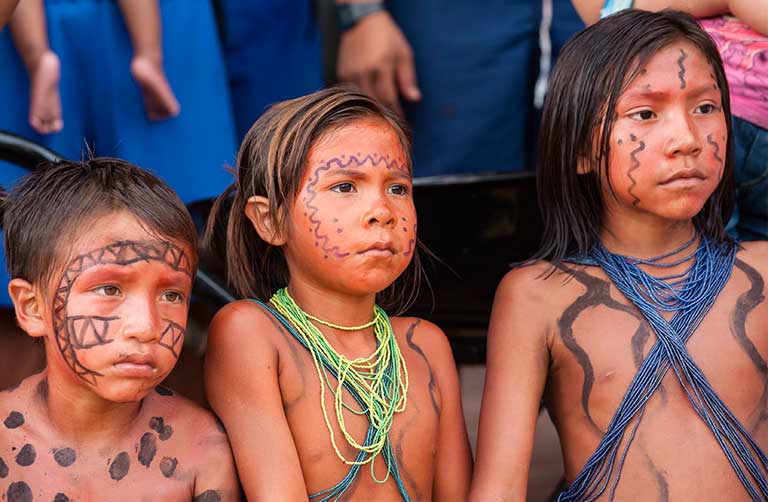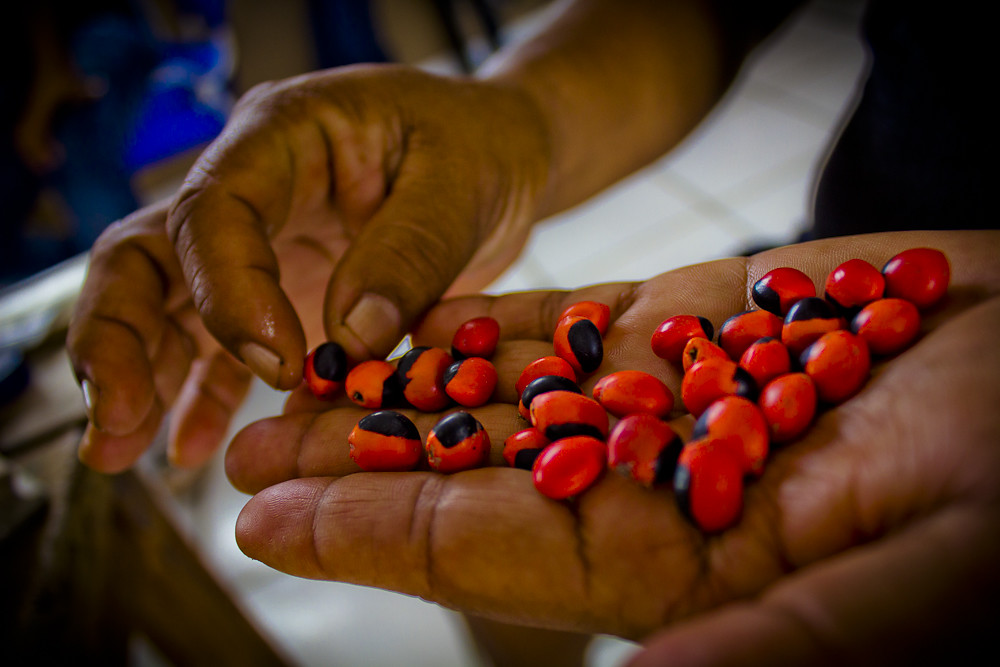- New research argues that large, legally protected territories are necessary for indigenous peoples to maintain their traditional livelihoods.
- The authors were surprised to find higher population densities inside versus outside of nearly half (295) of all indigenous territories.
- Indigenous lands provide global-scale environmental benefits. Nearly one-fifth of all Amazonian plants and animals live in these territories, and these areas retain 25.5% of all carbon stocks in Brazil.
- Altering the protected status of indigenous lands or opening them up to exploitative economic activities will affect ethnocultural integrity and compromise Brazil’s commitments to climate change and biodiversity protection.

In Brazil, indigenous lands make up 13.5% of the national territory and are home to half a million indigenous peoples speaking 280 distinct languages.
New research, published in the journal Land Use Policy, argues that large, legally protected territories are necessary for indigenous peoples to maintain their traditional livelihoods and to safeguard the global-scale environmental benefits provided by these lands.
“Our paper entirely rejects the often-proclaimed anti-indigenous political banner in Brazil of ‘Too much land for too few Indians’ (in Portuguese, ‘Muita terra para pouco índio’),” Rodrigo Begotti, of the University of East Anglia in the U.K. and co-author of the study, told Mongabay in an email.
The authors were surprised to find higher population densities inside versus outside of nearly half (295) of all physically demarcated indigenous territories in the study. Only 208 Brazilian indigenous lands had the low population densities associated with traditional hunter-gatherer, horticulturalist and semi-nomadic societies.
Using census data and land-use maps from indigenous and non-indigenous populations, the researchers analyzed 587 demarcated indigenous territories spanning a combined 1.9 million km2 (735,000 mi2), an area almost four times the size of Spain.

“These results show the critical importance of legally protecting sufficiently large indigenous territories. Larger indigenous populations mainly occupy vast territories and these lands remain critical if Brazil is to accomplish its international commitments to both protect tropical biodiversity and mitigate climate change,” study co-author Carlos Peres, of the University of East Anglia, UK said in a statement.
Indigenous lands provide global-scale environmental benefits. Nearly one-fifth of all Amazonian plants and animals live in these territories, and these areas retain 25.5% (about 13 gigatons) of all carbon stocks in Brazil.
The study found that nearly 90% of indigenous lands analyzed had a higher proportion of native vegetation cover than their surrounding areas, protecting nearly an eighth of Brazil’s national territory — more than 1 million km2 (386,000 mi2) of forests, prairies and savannas.

“We also find that traditional livelihoods of native Brazilians are intricately linked to healthy environmental conditions and that Indigenous Lands are still efficient in deterring deforestation,” Begotti said.
Altering the protected status of indigenous lands or opening them up to exploitative economic activities such as mining and commodity agriculture, according to the authors, will affect ethnocultural integrity and compromise Brazil’s commitments to climate change and biodiversity protection.
“There is now strong political pressure to integrate indigenous peoples into the market economy by means of establishing commodity agricultural crops and unleashing mining activities inside Indigenous Lands,” Begotti said.
“The justification is that indigenous peoples want to gain access to consumer goods and should generate monetary revenues, regardless of the risks to their ethnocultural diversity and traditional knowledge.”

In 1988, the Brazilian constitution recognized the land rights of indigenous peoples on territories legally referred to as indigenous lands (terras indígenas). FUNAI, the federal agency responsible for protection and demarcation of indigenous lands, as well as uncontacted tribes, has had severe budget cuts, making it nearly impossible to demarcate new indigenous lands or enforce protections.
“For indigenous peoples, securing their land rights is critical to maintaining their collective identity and self-determination,” Begotti said. “Unfortunately, Brazil’s current legislative scenario coupled with a hostile federal executive has only fueled land conflicts and rural violence against native peoples, and increased deforestation rates within Indigenous Lands.”
High rates of suicide and poverty are found in indigenous groups that still lack land rights recognition. Land rights are central not only to poverty reduction but to a wide range of human rights such as food, water, baseline health conditions and ethnocultural identity.

“Begotti and Peres provide a valuable compilation of the flood of setbacks for Brazil’s biodiversity and indigenous peoples since [Brazil’s president] took office as the country’s president in January 2019,” said Philip Fearnside, a professor at Brazil’s National Institute for Research in Amazonia who was not involved with the study.
Now, just weeks after the publication of this study, the situation is worsening. A recent measure opened up 98,000 square kilometers (37,800 square miles) of indigenous lands to outsiders, stripping protections from 237 indigenous areas that had not yet completed the process of “homologação” (final recognition with a presidential decree). The good news, Fearnside notes, is that this measure, known as the “provisional measure for land grabbing” (MP da grilagem), was allowed to expire without a vote, meaning it will not enter into permanent law unless a proposed law that is being drafted for consideration beginning next week enacts the same measures.
The militarization of environmental actions, fires, new roads into the rainforest such as the notorious BR-319 (Manaus-Porto Velho) Highway, and vulnerabilities surrounding COVID-19 are also escalating threats to indigenous lands and people.

When asked what message the authors would like to convey to the Brazilian government, Begotti referred to the words of a famous indigenous peoples’ advocate, Orlando Villas-Bôas. When interviewed nearly 30 years ago, Villas-Bôas urged Brazilian dominant society to respect all indigenous peoples and their cultural legacy, for their ancestral lands were conquered by Europeans in the making of what is now called Brazil.
“Based on this plea,” Begotti said, “we would second Villas-Bôas in stating that we are one big step closer to extirpating a history of at least 8,000 years of ethnocultural diversity of our nation-state and all of its associated traditional knowledge, assimilated over a long process of trial-and-error in rather successfully handling natural ecosystems.”

Citation: Begotti, R. A., & Peres, C. A. (2020). Rapidly escalating threats to the biodiversity and ethnocultural capital of Brazilian Indigenous Lands. Land Use Policy, 96, 104694. doi:10.1016/j.landusepol.2020.104694.
Banner image of Wayruru (Ormosia coccinea) seeds are used to make jewelry by some Amazonian indigenous peoples. Photo by Foro do Eixo CC BY-SA 2.0 license.
Liz Kimbrough is a staff writer for Mongabay. Find her on Twitter @lizkimbrough_
FEEDBACK: Use this form to send a message to the author of this post. If you want to post a public comment, you can do that at the bottom of the page.
